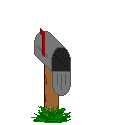
|
|

|
Emperor Qin Shi Huang had always been fearful of any imminent attack by one or more of the conquered six kingdoms. This is why he stationed a great army consisting of tens of thousands of soldiers to the east of the capital as a defense precaution. Even to his death, a great underground army was by his side to protect him from enemies. The entire site evokes the military might and spirit that secured Qin the authority to rule a unified China. The terracotta warriors and horses and their accompanying burial accessories offer the present and future generations with an invaluable source of materials for studies in Chinese history, politics, economy, culture, art and technology.
For example, the tremendous variation in the facial expressions, hair styles, weapons, armor and headgear provide a wealth of information to both the archaeologist and historian. Special attention must be paid to the forms of weaponry used in the Qin dynasty. The Qin crossbow has a very intricate trigger mechanism. Darts propelled from the crossbow could penetrate the armor of Qin’s foes, yet the weapon was handy enough to be wielded by a mounted archer. The very fact that such a weapon could be invented and put into use during the Qin Dynasty where technological establishments were backward and under-developed showed that the Qin people were truly remarkable and intellectually superior. Furthermore, the variety of bronze weapons unearthed is still sharp and shining despite 2000 years underground. This again demonstrates the advanced level of Qin metallurgy.
|